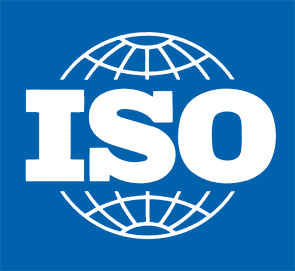In our last post we examined “The importance of calibration in forensic science.” Now I want to drive down deeper into this issue.
The calibration of a machine represents the very best results that that machine can ever preform. Over time, through use or non-use, a given machine will not gain tighter precision; it will not gain closer accuracy (bias). It will lose it over time.
This is why it is crucial that we calibrate our measurement machines as frequently as possible. The preference being that true scientific calibration happen at least once a day. It is in doing it this way with this frequency that we can achieve an acceptable level of risk of being wrong.
This “teaching of the machine” of this machine has to be based upon the proper use of standards during this calibration of the machine. In order for us to begin to have any confidence in the machine and its results, we must use traceable and true Certified Reference Materials (CRM) as defined in science.

Here are the international scientific definitions as to what constitutes a CRM:
- ISO Guide 30
This Guide recommends terms and their meaning used in connection with reference materials, taking into account those terms which are used in reference material certificates and appropriate test reports.
- ISO Guide 31
This Guide is intended to help producers to prepare clear and concise certificates to accompany certified reference materials. Such certificates, while maintaining their essential character, should help to provide, in summary form, all the information needed by the user of the reference material.
- ISO Guide 32
Quality assurance in a testing laboratory, particularly in the case of its assessment (see ISO/IEC Guide 25), highlights the need to consider closely the question of the accuracy of its measurements and analytical results, and to ensure that the principles necessary to establish demonstrated accuracy have not been omitted.
The calibration of the parameters associated with chemical analyses and material testing deserves particular attention, because major errors can be made by neglecting or ignoring the basic principles of metrology which also apply to these areas. This Guide identifies a number of general recommendations for those who, either in laboratories or as assessors, are faced with this problem.
- ISO Guide 33
This Guide discusses the uses of certified reference materials (CRMs) and their correct applications.
Clause 2 of this Guide presents definitions (with indication of their sources) of terms used, and clause 4 sets out the statistical considerations on which the Guide is based.
Clause 5 discusses the role of CRMs in measurement science and in realization of conventional measurement scales.
Clause 6 presents recommendations for developing criteria for the assessment of the precision and trueness of a measurement procedure by the use of CRMs. It pertains only to CRMs characterized to be homogeneous as described in ISO Guide 35 [4].
NOTE The use of CRMs is essential for assessment of trueness and optional for assessment of precision.
This Guide does not describe the use of certified reference materials as calibrants. This subject is treated in ISO Guide 32 [3].
- ISO Guide 34
Guide 34:2009 specifies general requirements in accordance with which a reference material producer has to demonstrate that it operates, if it is to be recognized as competent to carry out the production of reference materials.
Guide 34:2009 is intended for the use by reference material producers in the development and implementation of their management system for quality, administrative and technical operations. Reference material customers, regulatory authorities and accreditation bodies may also use it in confirming and recognizing the competence of reference material producers.
Guide 34:2009 is not intended to be used as the basis for conformity assessment by certification bodies.
Guide 34:2009 sets out the management system requirements in accordance with which reference materials shall be produced. It is intended to be used as part of a reference material producer’s general quality assurance (QA) procedures.
Guide 34:2009 covers the production of certified and non-certified reference materials. For non-certified reference materials, the production requirements are less stringent than for certified reference materials. The minimum requirements for the production of non-certified reference materials are specified throughout the Guide.
- ISO Guide 35
ISO Guide 35:2006 gives statistical principles to assist in the understanding and development of valid methods to assign values to properties of a reference material, including the evaluation of their associated uncertainty, and establish their metrological traceability. Reference materials (RMs) that undergo all steps described in ISO Guide 35:2006 are usually accompanied by a certificate and called a certified reference material (CRM). This Guide will be useful in establishing the full potential of CRMs as aids to ensure the comparability, accuracy and compatibility of measurement results on a national or international scale.
In order to be comparable across borders and over time, measurements need be traceable to appropriate and stated references. CRMs play a key role in implementing the concept of traceability of measurement results in chemistry, biology and physics among other sciences dealing with materials and/or samples. Laboratories use these CRMs as readily accessible measurement standards to establish traceability of their measurement results to international standards. The property values carried by a CRM can be made traceable to SI. units or other internationally agreed units during production. ISO Guide 35:2006 explains how methods can be developed that will lead to well established property values, which are made traceable to appropriate stated references. It covers a very wide range of materials (matrices), ranging from gas mixtures to biological materials, and a very wide range of properties, ranging from chemical composition to physical and immunoassay properties.



precision measuring machines says:
Well the importance of calibration in forensic science is very much compulsion.. This Guide identifies a number of general recommendations for those who, either in laboratories or as assessors, are faced with this problem.